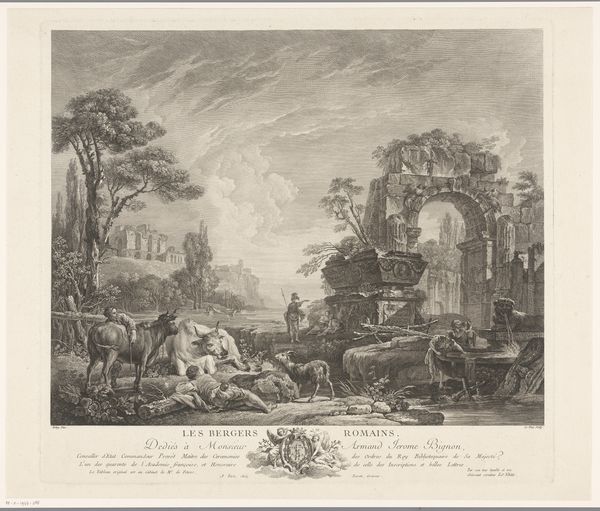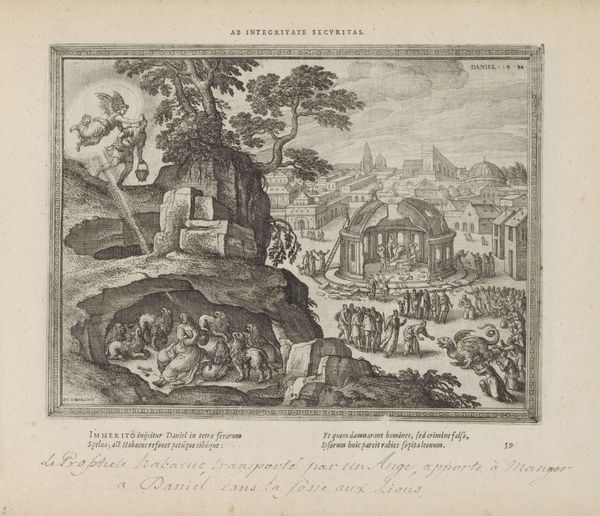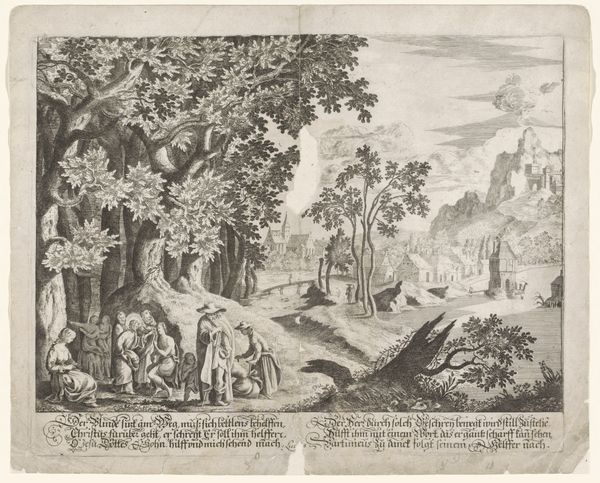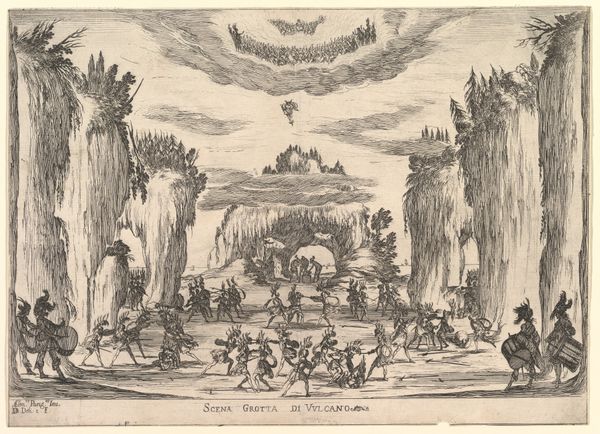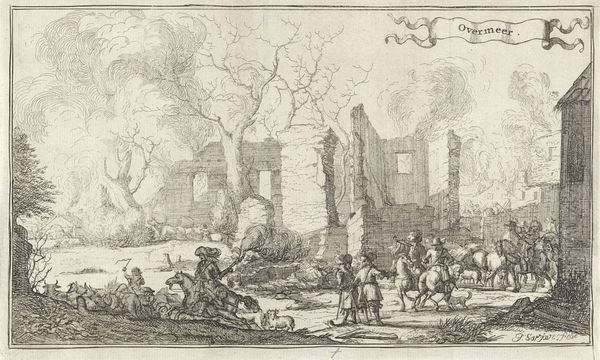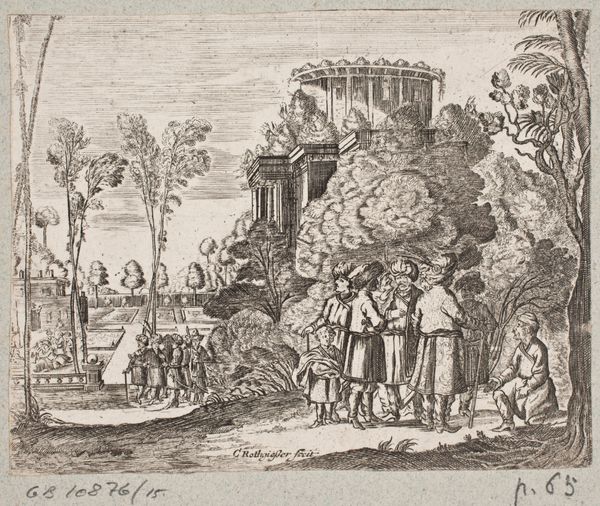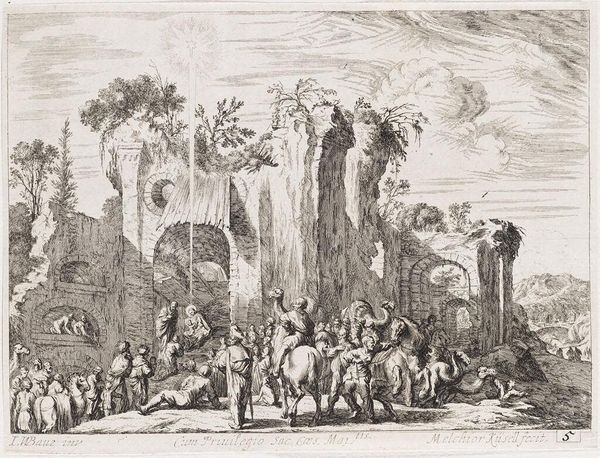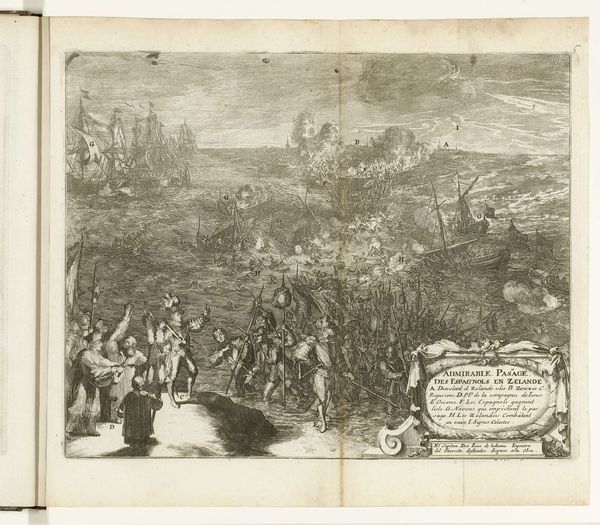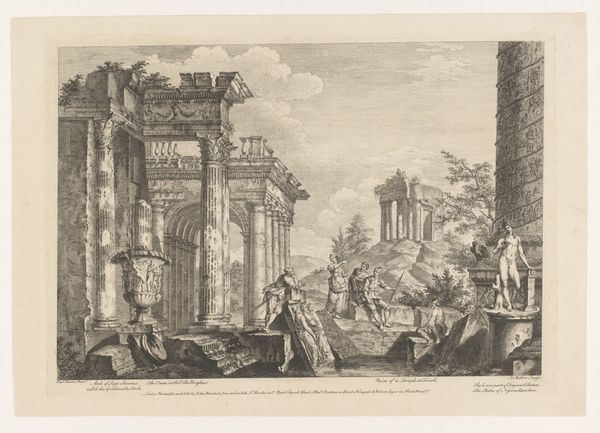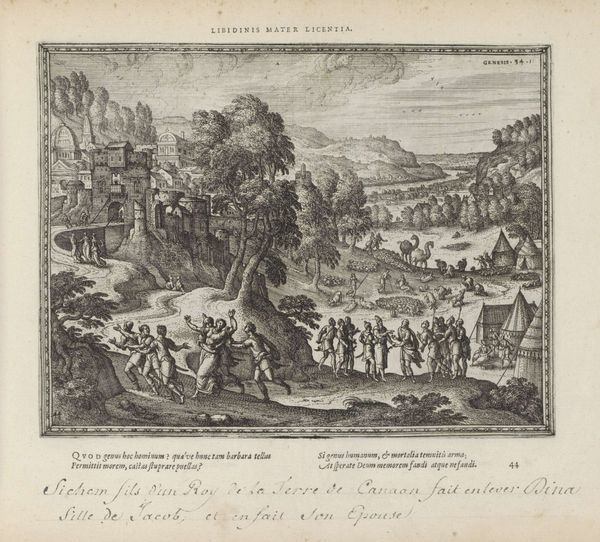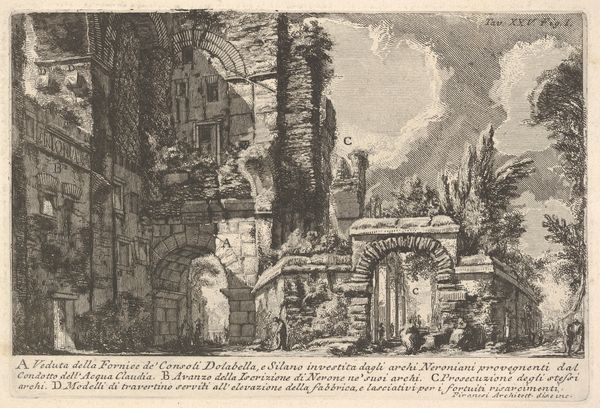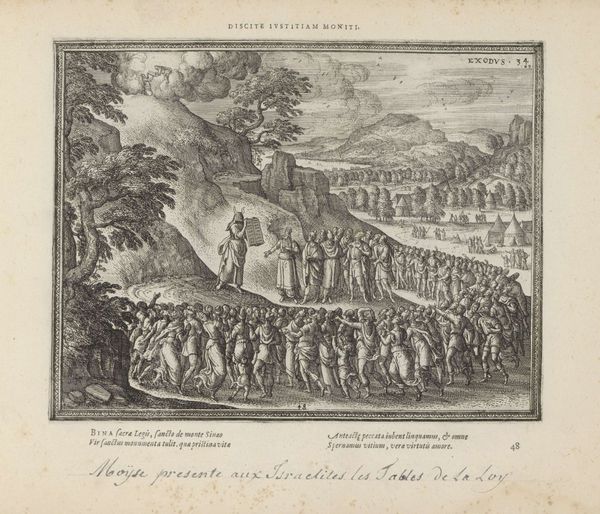
Remains of the Temple of Castor and Pollux . . . (Avanzo del Tempio di Castore e Polluce . . .) 1735 - 1778
0:00
0:00
drawing, print, etching, engraving, architecture
#
drawing
# print
#
etching
#
landscape
#
romanesque
#
column
#
history-painting
#
engraving
#
architecture
Dimensions: Plate: 5 1/4 × 7 11/16 in. (13.3 × 19.5 cm) Sheet: 5 7/8 × 8 1/4 in. (14.9 × 21 cm)
Copyright: Public Domain
Editor: So, this is Giovanni Battista Piranesi’s “Remains of the Temple of Castor and Pollux…,” dating from sometime between 1735 and 1778. It's an etching, part of a series of Roman ruins. What strikes me is this blend of grandeur and decay; these massive architectural remnants consumed by nature. What do you make of it? Curator: The power of Piranesi lies in his ability to evoke a palpable sense of cultural memory. Note how the fragmented temple is juxtaposed with other ruins, including remnants of Caligula’s house. Consider what it signifies when symbols of civic order and imperial ambition crumble. Does this not call into question our own aspirations for permanence and glory? Editor: Definitely. I see it as a commentary on the fleeting nature of power and empires, and even the futility of human endeavors. Curator: Precisely. Piranesi masterfully employs shadow and light to emphasize this decay. But what of the strategic placement of human figures within the scene? Do they diminish or amplify the grandeur of the ruins? What is the human’s relation to their own cultural heritage? Editor: I think they highlight the scale of the ruins, almost rendering the figures insignificant against the backdrop of such monumental history. It emphasizes the insignificance of individual human existence in the vast stream of historical time. Curator: A thoughtful point. What is this image urging us to reflect on regarding time, cultural values, and our place within that larger historical narrative? How might the architecture that survives our lives symbolize a different type of legacy, one we are also forced to interact with? Editor: This really makes me consider the stories buildings and ruins whisper across time, their significance shifting with each new generation and interpretation. Curator: It certainly shows how architectural iconography, even in ruin, continue to speak powerfully across time.
Comments
No comments
Be the first to comment and join the conversation on the ultimate creative platform.
